6,628 people reached on Lassi with Lavina FB page – 434 engagements – 22 Likes
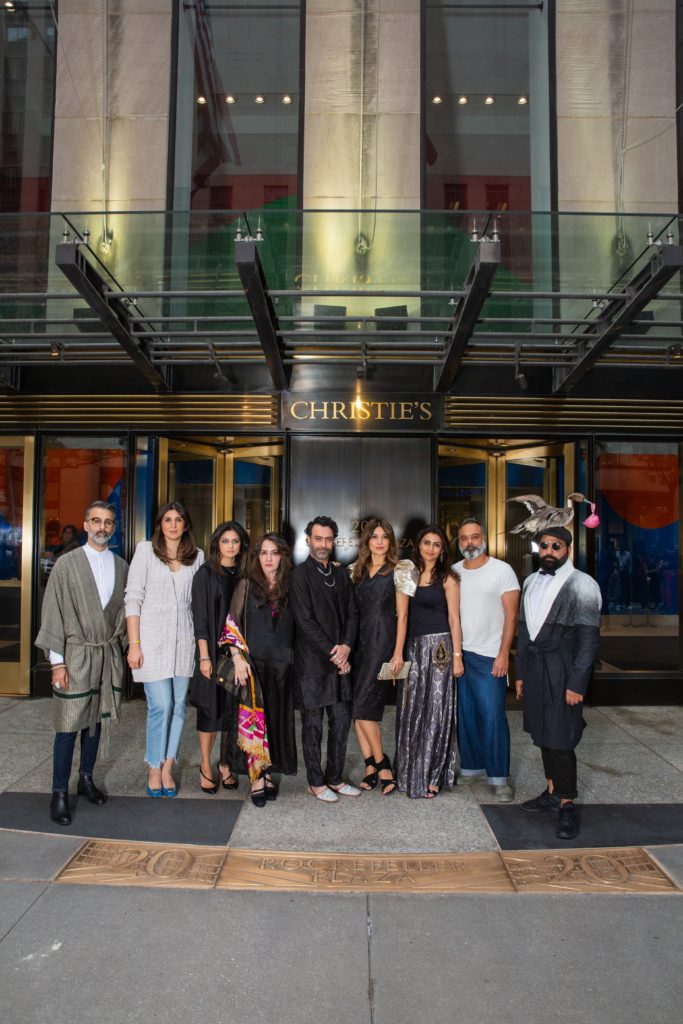
In New York, India and Pakistan Reach Detente Through Fashion
[dropcap]E[/dropcap]ven as tensions build between India and Pakistan over Kashmir, one can’t help but remember the softer, gentler things these two neighbors – originally one country – share in common: a love for mangoes and gulab jamun, a passion for cricket, Bolly]wood – and of course, ethnic fashion.
These have become far easier to share in the space of a third country – America where Indians, Pakistanis and Bangladeshis do maintain friendships and business relationships. Restaurants and grocery stores often tout themselves as Indian, Pakistani and Bangladeshi, putting their country of origin first in the lineup. All three nationalities fall under the common label of South Asian and are often regarded as such.
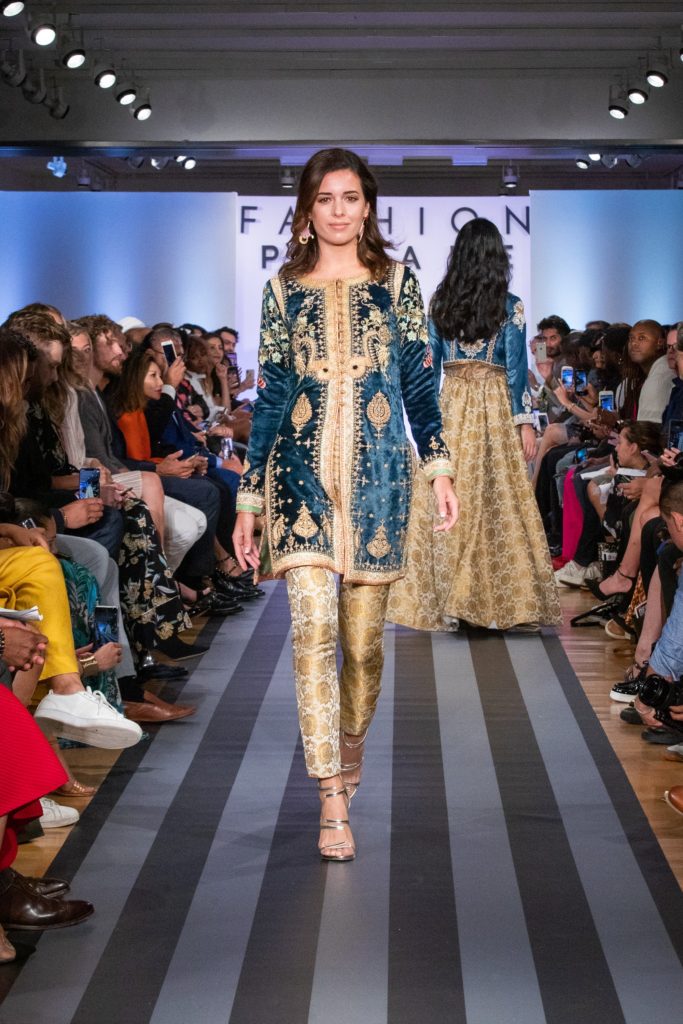
[dropcap]F[/dropcap]ashion is perhaps the softest and most intimate of shared common dreams and desires and while a runway across borders would probably not be possible in India or Pakistan in today’s heightened tensions, a show of designers from both countries did take place in New York at Christie’s, attended by an international audience. ‘Fashion Parade’ was followed by a panel discussion with the designers at the Fashion Institute of Technology (FIT) which is the educational sponsor of the event and has an internationally diverse student body.
The impresario behind Fashion Parade is Sadia Siddiqui, founder and creative director of Mustang Productions which has hosted several shows in London and Pakistan and now for the first time in New York. Siddiqui, who is originally from Pakistan, lives in London and moved to New York a year back. She is passionate about creating awareness of South Asian art and culture in the international world.
“People possibly think that perhaps the clothes that will be showcased here are going to be traditional clothes,” observed Siddiqui in an interview. “That’s not going to be the case because Pakistani designers and Indian designers also design Western clothes for a modern audience back home, and they are actually bringing clothes which are more fusion and they are Western silhouettes. The craftsmanship, the fabric, the workmanship is obviously true to South Asia, but is very relatable to the West.”
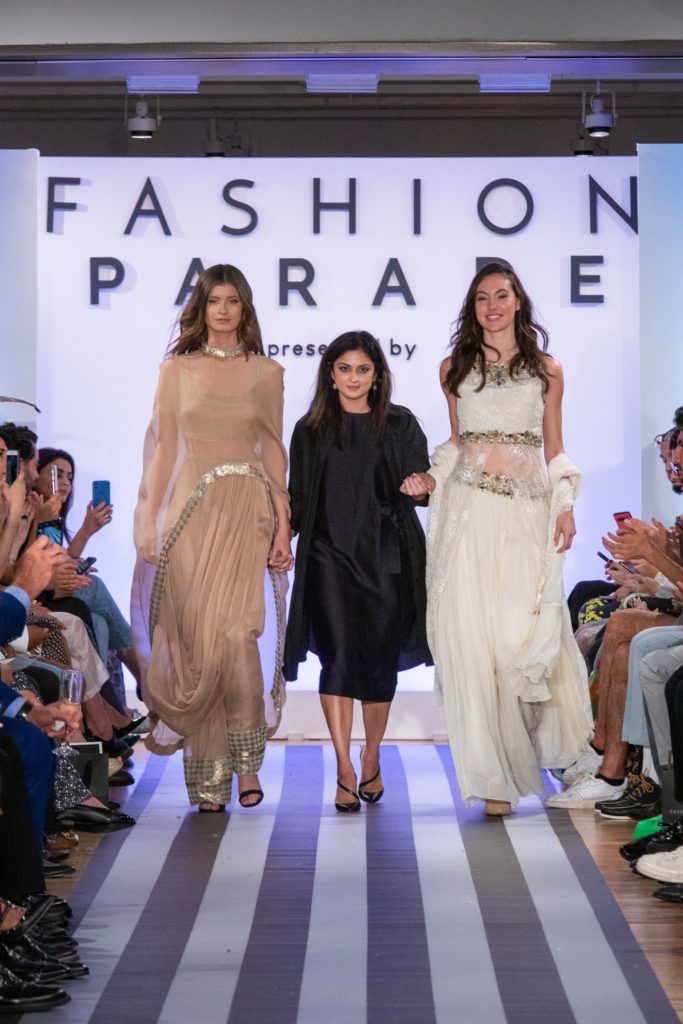
[dropcap]T[/dropcap]he fashion show at Christie’s Auction House was preceded by a champagne cocktail to view contemporary South Asian art and was attended by international guests. The designers were noted names Kamiar Rokni, Faiza Samee, Khadijah Shah and Ali Xeeshan from Pakistan and Manish Chhabra and Payal Chhabra of Delhi Vintage Company and Gautam Rakha, Rahul Rabani, Shebani Rastogi and Ghazala Khan of Rabani and Rakha by Raaz from India.
The show highlighted the 2020 Spring Collection of the six designers and was a dazzling display of creativity and craft across the sub-continent and underlined the common moorings of both India and Pakistan in its inspirations and heritage. The collections were an unending cascade of color, glamour and fantasy.
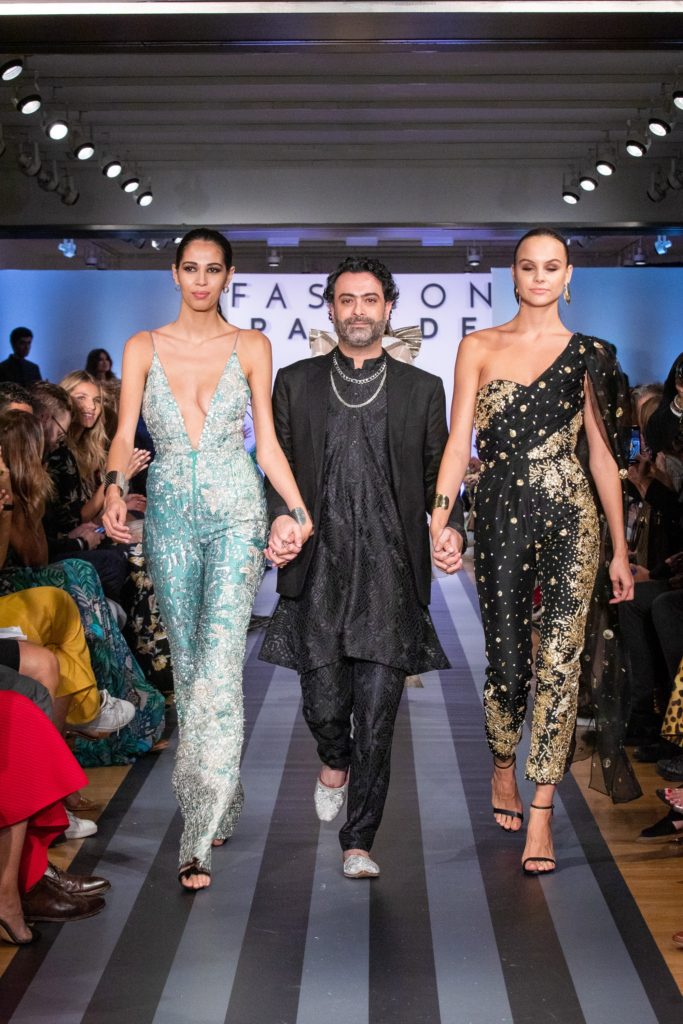
[dropcap]B[/dropcap]oth India and Pakistan excel in bridal wear so the sheer luxury of fashion was evident in the textiles and the embellishment. While ancient craft traditions ruled, they merged with modern sensibility and the styles and silhouettes were very wearable by the international woman.
Each designer had a theme but perhaps Delhi Vintage’s theme of ‘ulfat’ really underlined the message of an occasion where both India and Pakistan were showcasing on a single platform: “Love has no boundaries and no religion, sees no tradition and no culture. It is simply pure lovingness, which brings the world together.”
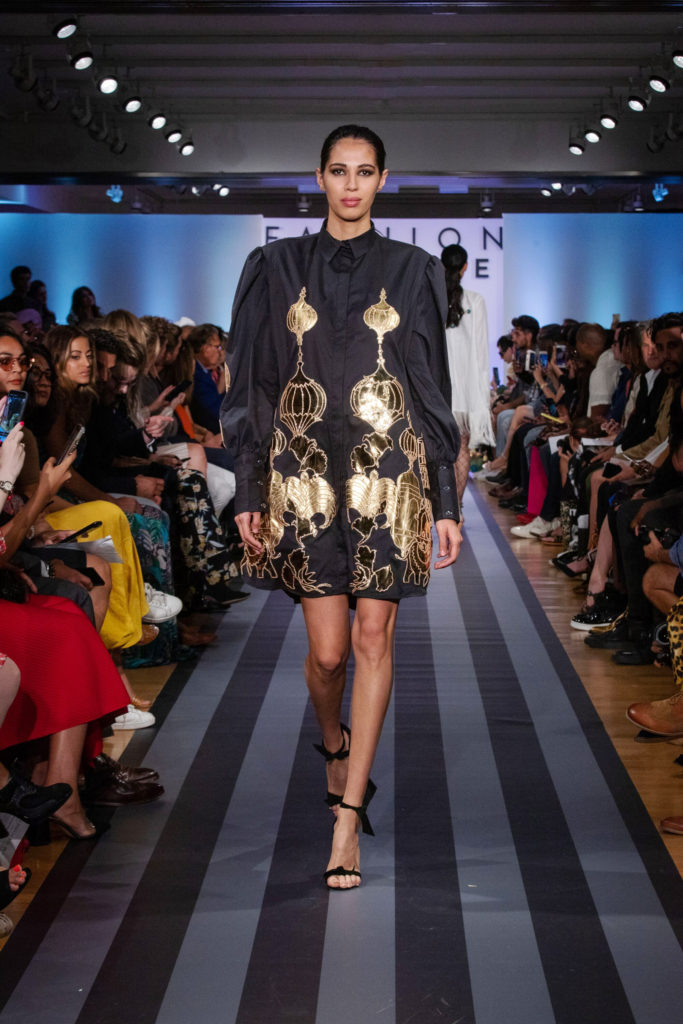
[dropcap]A[/dropcap]s Woman’s Wear Daily (WWD) noted, each designer melded traditional, rich customs with modern trends and designs in a lineup that showed both diversity and depth through their 10 looks: “The collections as a whole were enticing and all together made for a strong, diverse lineup. The event, which aimed to create awareness about South Asian art, culture and fashion, did so wonderfully with modern takes on traditional, beautiful costumes and craftsmanship.”
Having seen the grand drama of South Asian fashion on the runway, audiences were able to get the behind-the-scenes insights from the designers next day in a panel discussion in FIT’s amphitheatre where students and faculty had gathered for an inside look at the business of fashion. Needless to say, FIT has many fashion students from India and Pakistan.
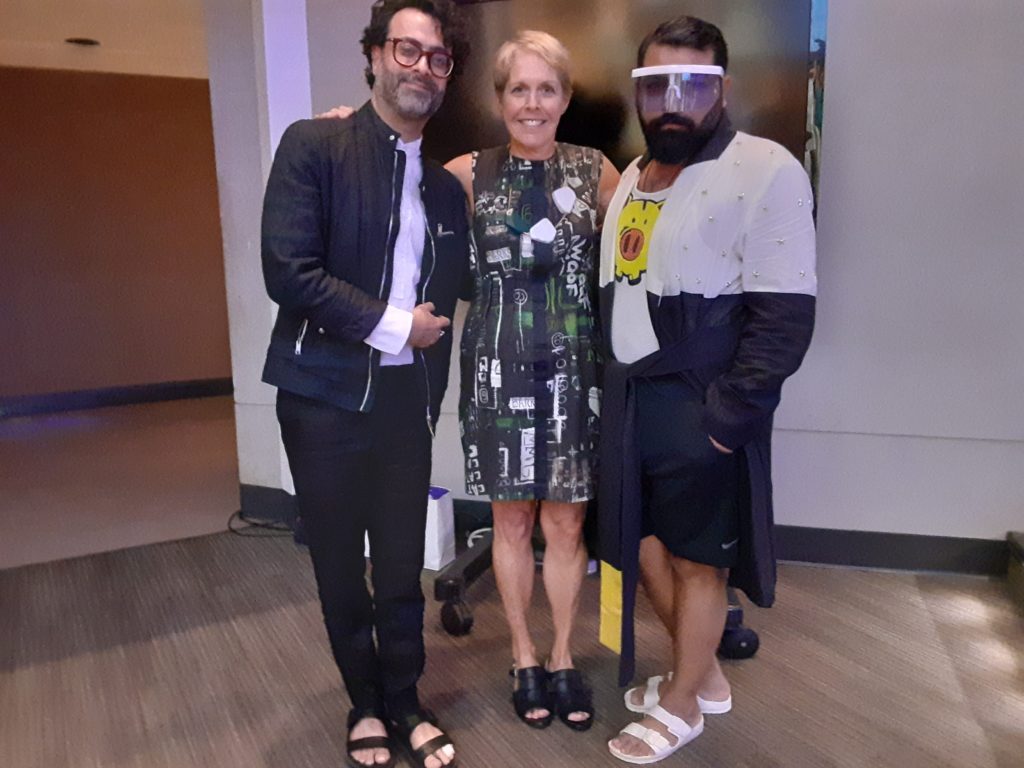
[dropcap]D[/dropcap]r. Mary. E. Davis Dean of FIT’s School of Graduate Studies noted that while fashion and the arts are a dynamic cultural force in both countries, they are not yet well-known in America. She observed, “We believe that global learning is essential, not optional. And indeed, students and faculty and our cosmetics and fragrance and marketing and management program will travel to Mumbai for one of their international field studies in the academic year.”
At the discussion it was an eye-opener to see the common road both Indian and Pakistani designers had traveled. Kamiar Rokni described how the scene had changed over the decades in Pakistan where it was earlier not a full-fledged fashion industry but more of a tailoring tradition and a home industry of ‘garage designers’.
Fashion was previously geared mainly to the bridal industry with a strong culture of ornamentation and embellishment but in the last 15 years the fashion industry in Pakistan has really taken off: “We now have lots of very popular and large scale retail and high street labels that go from casual to luxury. And I think between all of us, we sort of represent the spectrum of all this.”
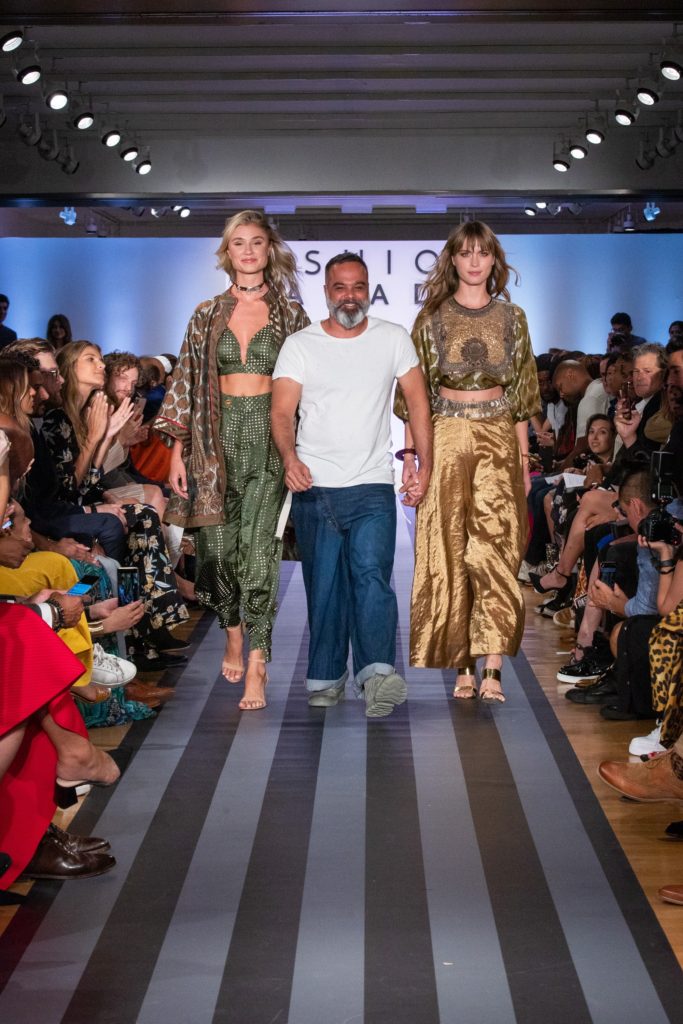
[dropcap]I[/dropcap]t is a similar story in India but is a bigger industry there due to the larger numbers.
The six designers spoke of slow and fast fashion, cultural appropriation, digital fashion and social media, inspiration and voice, social consciousness, business and profitability, east and west to the students who were happy to meet and interact with designers from India and Pakistan.
Asked if fashion could bring the two countries together and be a good market for each other since Pakistani fashions are appreciated in India and vice versa, some of the Pakistani designers shared how they had clients in India but things were at an impasse now.
The two countries are so near and so far apart currently. Faiza Samee, who is the doyenne of designers in Pakistan shared how she had worked with Indian clients for years. Her collection used to be stocked in Indian boutiques and she received awards there. As she recalls, “It was a fantastic relationship – and the potential still exists.”
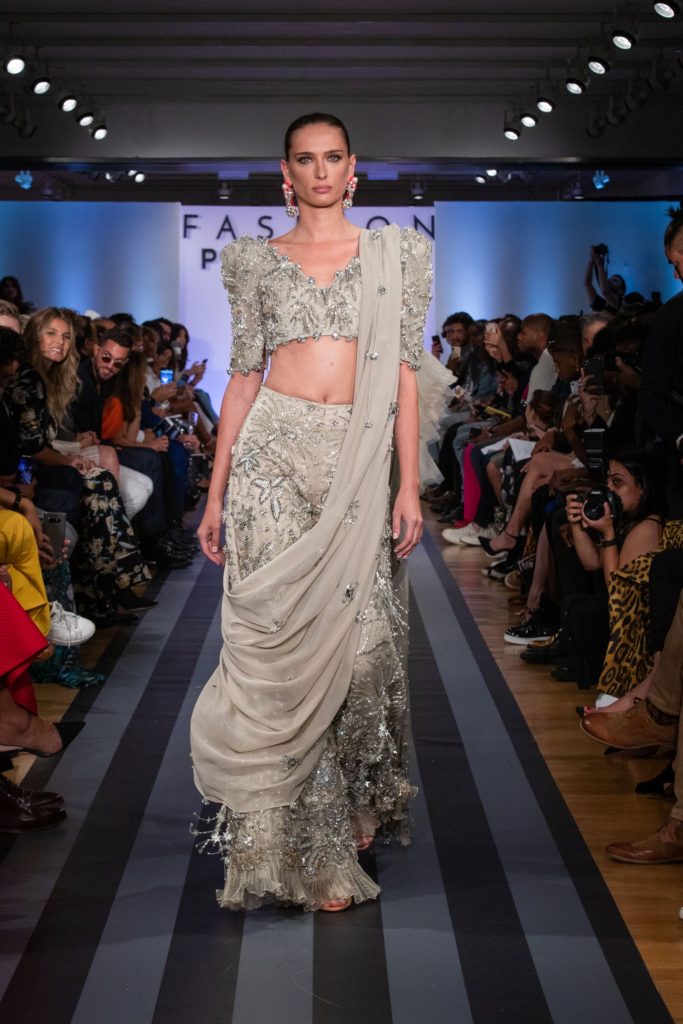
[dropcap]A[/dropcap]s Khadijah Shah, who has a thriving business of couture and high street labels pointed out, “It’s just a 45 minute plane ride between Lahore and Delhi but you just can’t go back and forth between the two countries. So it’s very unfortunate, and if the two countries were to resolve their issues, it would be a huge market for not only the fashion designers but for all businesses in both countries. But unfortunately, it’s a political factor; I guess we don’t have a say.”
Manish Chhabra of Delhi Vintage noted, “These events should happen more often so that there is a common platform and we can begin to reach each other through fashion, music, art, and culture and we can spread some love and respect through our work.”
If only the larger issues could be solved, then perhaps Indians and Pakistanis could enjoy the mangoes and the cricket, the gulab jamuns, the Bollywood movies and the fashion. Or should they start with these and the bigger tensions will automatically lessen?
(This was first published in my weekly column India in America in CNBCTV18)
Related Articles:
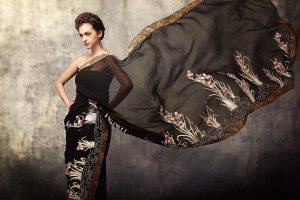
Ashdeen and the Magic of Parsi Gara
Few things are as beautiful or have such a convoluted history as Paris Gara – the gorgeous embroidery which came to India by way of Persia and China through the Parsi traders dealing in opium in China.
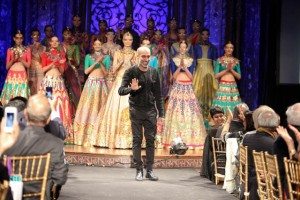
Manish Arora – Indian Fashion’s Sorcerer
Designer Manish Arora’s creations are the fashion equivalent of getting drenched in Holi colors – there’s exuberance, joy and sheer chutzpah. Colors which you thought would never, ever go together are locked in a raucous embrace in his gorgeous ensembles – and look perfect together.

2 Comments
Thank you, Susan – so glad you liked it. The collections from both countries were truly beautiful!
Your article was superb, Lavina! Detente between Pakistan and India is so very important for themselves and for Kashmir. They are all rich in culture. Focusing on this, which includes fashion as an art form, can have a powerful positive impact.
Many thanks!